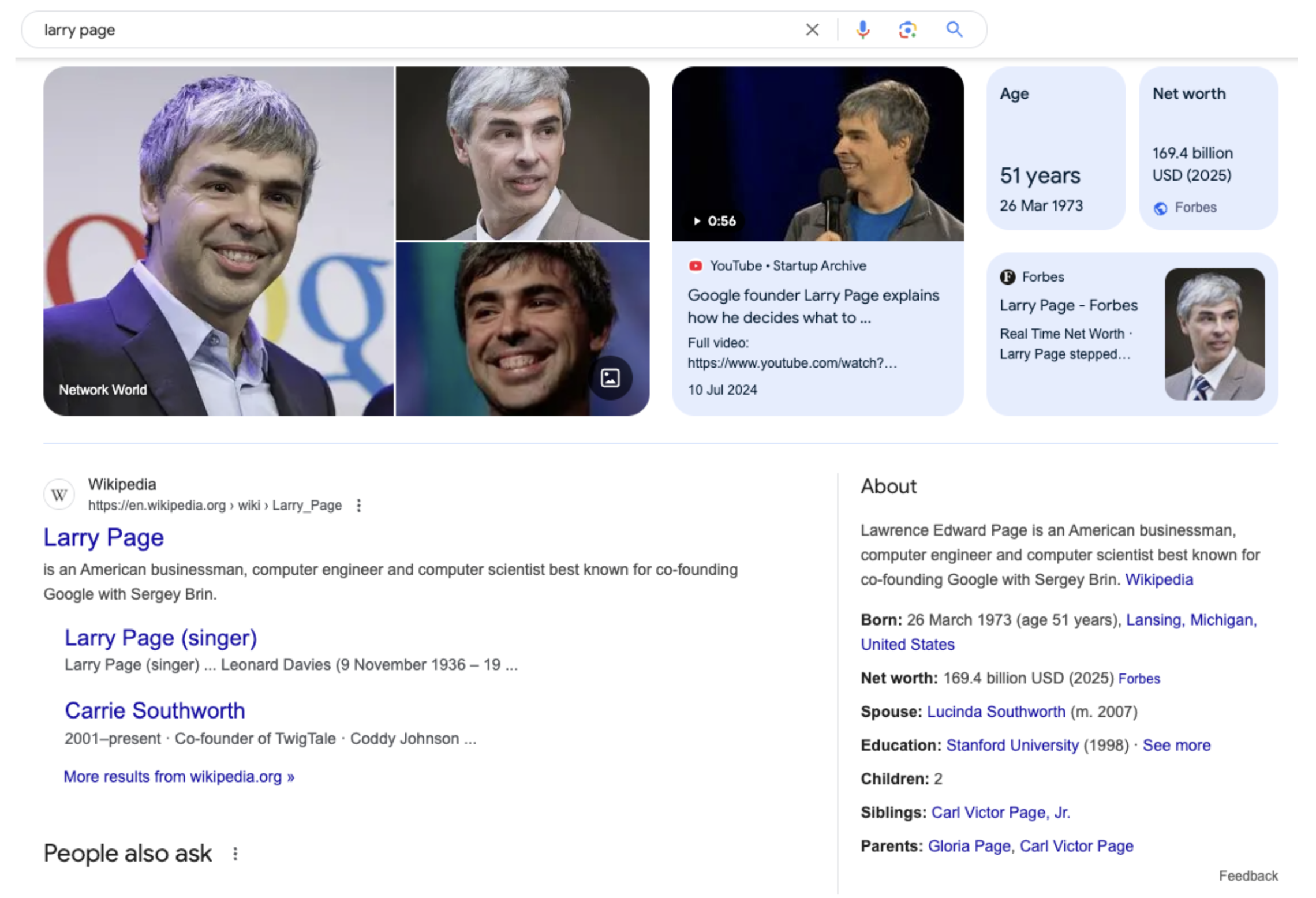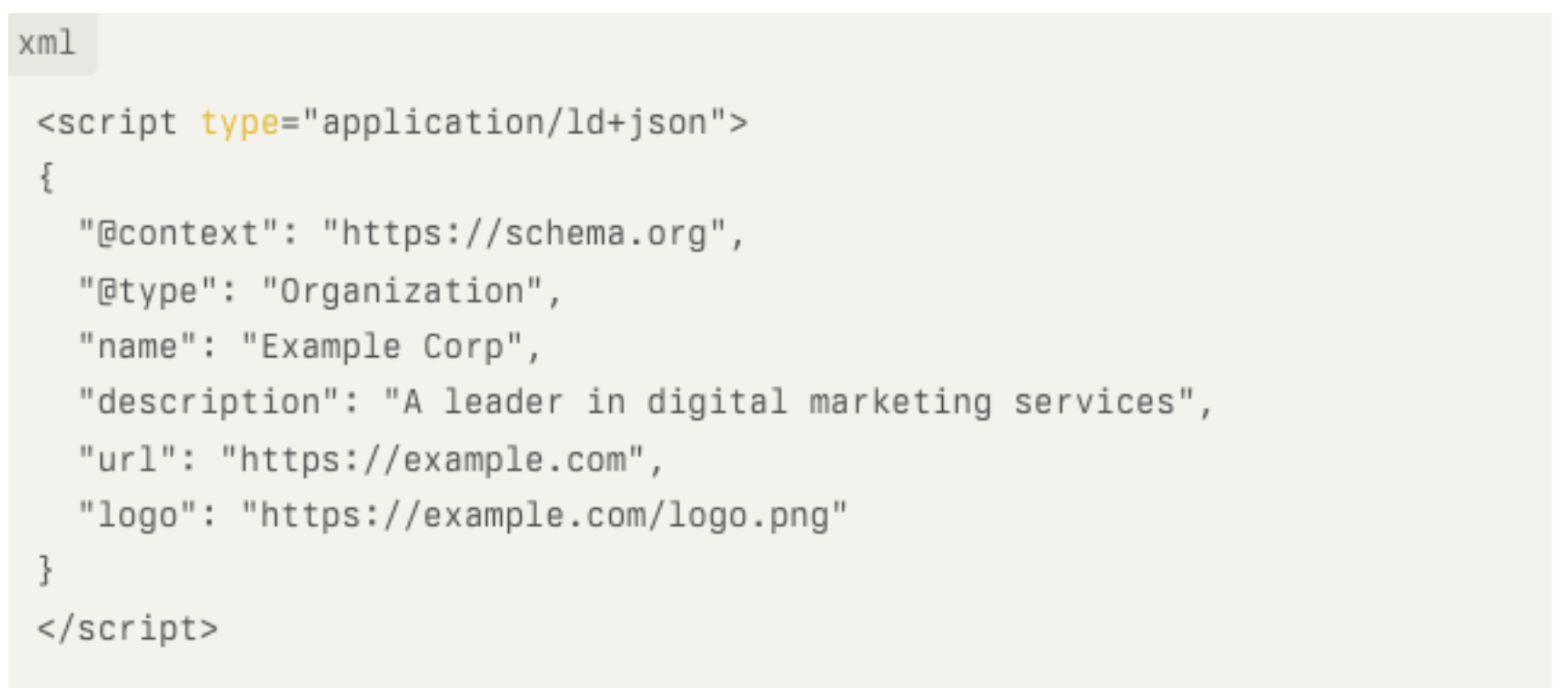Organic search has changed a lot over the years and continues to throw curveballs at those of us working in SEO. Even over the past year, the state of search has transformed fairly drastically, with the introduction of AI overviews, rise of answer engines, increasing importance of alternative content formats and the concept of total search optimisation. Basically, a lot has happened- or rather, IS happening.
The smarter search engines have become, the more search intent and contextual understanding have made their way to the forefront of how search engines display information to users. A major area of contextual understanding, one that is fundamental to both understand and optimise for, is ‘entities’. While the exact date of where entities were introduced isn’t easy to pin down, a widely accepted origin comes from the implementation of knowledge graphs (more on these later) back in 2012.
Defining entities in SEO
Google’s own definition of an entity is “a thing or concept that is singular, unique, well-defined and distinguishable.” This could be a person, a place, an object, an event- essentially anything with a distinct identity that Google can recognise to build contextual information around a query. They help Google to figure out what the user is actually looking for; particularly important for search terms that could have multiple meanings.
It’s important to note that entities are not keywords. While keywords are specific words or phrases users search for, entities represent the underlying concepts and are a specific record Google has pulled from an index of knowledge graphs. A common SERP feature, Knowledge Panels, are often the form shown to users sourcing from these entities. The example below demonstrates how an entity can be searched for (i.e. person ‘Larry Page’), and Google’s Knowledge Graphs then pull across other useful entities to provide more contextual information in the form of Knowledge Panels, including age and net worth.

Do entities still matter in 2025?
Short answer: absolutely. Entities remain fundamental to how search engines understand content, but we must recognise that their role has evolved. Instead of just recognising individual entities, search engines now prioritise contextual relationships between them. This shift is driven by AI, voice search, and Google’s increasing reliance on semantic understanding rather than traditional keyword matching. Optimisation now goes beyond simply including named entities in content; search engines now analyse how entities relate to one another, feeding into topical relevance mattering more than ever before.
E-E-A-T
Google’s E-E-A-T framework (Experience, Expertise, Authoritativeness, and Trustworthiness), while not a ranking factor, does play a vital role in how your online content is perceived by search engines. Brands and websites that consistently cover entity-related topics in depth are far more likely to be recognised as trusted sources. For example, a medical website discussing cardiovascular health should reference entities like cholesterol, heart disease, exercise, and diet to signal expertise to search engines and therefore reinforcing content credibility and authority. This aligns with the concept of topic clustering, where cardiovascular health serves as the pillar page, and related entities like cholesterol, heart disease, and diet are covered in sub-pages that internally link back to it. This structure once again helps search engines understand the relationships between topics, helping to improve both rankings and user experience.
AI-powered search engines
Optimising content for AI search engines, or answer engines, is a hot topic right now with a digital arms race of sorts seeing marketing experts researching, hypothesising and testing various methods. Well, one thing we can be sure about is the part entities have to play in LLMs like Perplexity and ChatGPT- they’re thought to rely on entities to generate more accurate, context-aware answers. This in turn suggests that content which strategically targets niche entities will have an edge in AI-driven search results.
Multi-platform discoverability
I mentioned total search at the beginning of this article for good reason- because entities aren’t just shaping Google search results. They’re influencing visibility across many other platforms including YouTube and TikTok. For example, optimising video content around entities helps to increase reach across these other platforms.
Personalisation and privacy
With third-party cookies disappearing, search engines and advertisers are slowly shifting toward ‘entity-based’ personalisation. Instead of tracking individual users, Google is grouping users by topics and entity-based behaviors to deliver relevant content, making entity optimisation that much more important for future-proofing personalised search.
How can I identify entities in my content?
If you’re wondering whether your content is entity-rich, thankfully there are a few simple ways to check. With Google’s Natural Language API, we can analyse our text and this tool will highlight recognised entities. This is great for a couple of reasons; one being it’s fairly simple to use and gives clear visibility over existing entities, and the other, more importantly, gives you insight into what Google understands about your content.
Another Google tool is Knowledge Graph Search API, which allows you to search for entities using their unique identifiers (MID). If you search for an entity like “Tower of London,” the API will provide relevant information, such as entity name (e.g., “Tower of London”), description (e.g., “Historic castle and former royal residence in central London”), official URL (e.g., Visit the Tower of London website) and images (e.g., pictures of the Tower or surrounding landmarks).
Alternatives that aren’t developed by Google include third-party SEO tools such as Ahrefs and InLinks which have built-in capabilities to show which entities Google associates with your content. The most reliable source for identifying entities is likely using one of Google first-party tools above, similar to how using Search Console is more accurate for organic traffic data than the likes of Semrush.
How do entities improve the relevance of search engine results?
Entities help Google move beyond keyword-matching and into true understanding of what a searcher is looking for. When a word has multiple meanings, Google uses entities to figure out the correct interpretation based on the surrounding context- therefore it’s important to make sure your content has depth and presents reasoning. Google also doesn’t just look at individual pages, instead analysing entire topics. A page about “machine learning” that also covers “AI” and “natural language processing” provides a more complete picture, helping it rank better.
With search intent matching becoming a critical factor in how our content is recognised by Google, being able to more accurately match said intent is another valuable aspect of entities. Let’s use ‘best smartphones’ for an example- a common query type from users looking for new products. Now, ‘best smartphones’ isn’t just looking for that exact phrase, they’ll likely want comparisons, brand names, specs and reviews. Entities help Google understand this and therefore display the most suitable information based on their intent.
More recent developments include voice recognition where entities are helping to power conversational and AI-driven search results. Voice search is an increasingly growing method of search for users across the globe, with an estimated 27% of the global online population using it. In voice search, an entity refers to an identifiable person, place, concept that a search engine can recognise and understand within a voice search query. Of course, contextual understanding is heavily relied upon in this case, where natural language processing is often utilised to interpret said context.
How to optimise for entities
Structured Data
Structured data can be used to explicitly define relationships, attributes and context for search engines, resulting in a precise understanding of entities and their web of connections.
The likes of schema markup directly labels entities and their properties, reducing ambiguity:

This markup clarifies that “Sony” is a brand tied to a specific product, in turn avoiding confusion with unrelated mentions of “Sony” (e.g., movies or music). Another benefit of structured data is its use in unlocking SERP features such as rich snippets and knowledge panels; resulting in ratings, pricings, FAQs appearing directly in search results. By strengthening entity authority for brands, people or organisations, we can bolster credibility and visibility, as well as improve CTRs and signalling topical expertise.
Tip: For local businesses, one of the most effective ways to strengthen entity recognition is through the use of LocalBusiness schema. This structured data markup will help Google display accurate addresses, opening hours, service areas, and contact information. A properly deployed LocalBusiness schema will enrich Google’s understanding of the company’s physical presence and make it much easier for any potential customers to find important business information directly in search results.
Content Optimisation
We’ve discussed how entities in SEO play such a key role in contextual understanding of content, so it may be unsurprising to hear that we can optimise our content and in turn optimise for entities. Essentially, we can build authority by creating comprehensive, context-rich content:
- Semantically related keywords: Use terms naturally associated with your primary entity to build out the contextual understanding around a specific topic.
- Entity frequency: Mention the entity early and consistently, but as you would with keywords, avoid over-optimising as this can deter effectiveness.
- Content structure: Use descriptive headers and organise content to guide users through related subtopics- content hierarchy, structure and internal linking are all important elements to consider.
Internal Linking
A well-structured internal linking strategy can reinforce entity connections and demonstrate topical authority to search engines crawling your content. For example when mentioning entities within content, always use natural anchor text to link to relevant pages. To avoid cannibalisation and prevent the dilution of ranking potential, try to designate one authoritative page per entity rather than spreading similar content across multiple competing pages.
Tip: Leverage synonyms and variations of entity names to strengthen relevance. What we mean by this is if an entity is commonly referred to in multiple ways, such as “EVs” for “electric vehicles”, linking both variations to the same destination helps search engines associate them as a unified concept.
Wrapping up
For quite some time now, SEO has been shifting towards total search optimisation. Enabling search engines to have greater contextual understanding of content helps to improve its visibility. Entities in SEO remain a highly important piece of the puzzle; search engines want to understand what content means, not just what words are on the page. The more your content fits into the bigger entity-based ecosystem, the better it’s likely to perform.
To find out more about Hallam’s Organic offering, get in touch today or read about the great work we do here.





